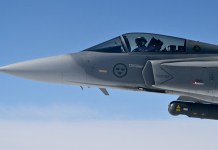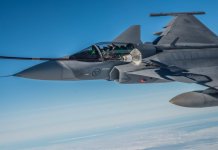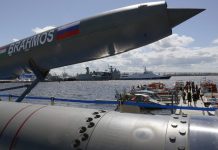US government has designated a new rapidly mobile and movable radar capable of closely tracking hypersonic weapons, unmanned aerial vehicles, fifth-generation combat aircraft and other threats, Northrop Grumman announced in a press release on Tuesday.
“Northrop Grumman’s long-range radar, an advanced digital radar available in the market today, has been officially recognized by the US government as the AN/TPY-5(V)1 making it the newest multi-mission air-surveillance radar available to the US military and its international partners,” the release said.
“The AN/TPY-5(V)1 provides enhanced surveillance and a robust multifunction capability,” Northrop Grumman Vice President Mike Meaney said. “This S-band system features advanced electronic protection combined with a high degree of mobility that will help ensure survivability in today’s complex battlespace.”

The new system is capable of facing the challenges of fifth-generation fighters, hypersonic weapons, unmanned systems and ballistic missiles, the release said.
“AN/TPY-5(V)1’s size and form factor have been optimized for expeditionary operation on a modern, global battlefield, making its intrinsic capability to self-deploy, emplace and displace in minutes – a key discriminator compared to other systems, ” the release added.
The radar’s advanced digital AESA architecture and command and control integration have been combined to enable protection and situational understanding for warfighters, according to the release.
Meanwhile, earlier in June, US Missile Defense Agency (MDA) has not taken the required steps to reduce technology risks before developing counter-hypersonic weapons, the Government Accountability Office (GAO) said in a report.
“MDA’s efforts to address hypersonic threats include the Glide Phase Interceptor (GPI) and Hypersonic and Ballistic Tracking Space Sensor (HBTSS). These efforts represent technologies that have considerable risks, but MDA has not taken necessary steps to reduce risks and ensure appropriate oversight from the Department of Defense (DOD) or stakeholder involvement,” the GAO said.
MDA, the report added, did not plan to obtain an independent technological risk assessment to determine the maturity of the technologies before proceeding with the development of the GPI, which is a missile designed to shoot down a hypersonic weapon in the middle or glide phase of its flight.

With respect to the HBTSS, the GAO said the missile defense agency failed to effectively coordinate efforts with the US Space Development Agency and Space Force despite the program being centered on developing space-based sensors to track hypersonic weapons.
Overall, the report added, the MDA has continued to fall short of its goals for asset deliveries and testing. For example, the MDA did not conduct any planned system-level cybersecurity tests, which left the agency without knowledge of system vulnerabilities and contributed to programmatic delays.
The GAO, a watchdog that conducts inspections authorized by Congress, also said improved Defense Department oversight and involvement would reduce risk as well.
- Via Sputnik News Agency
- Mail EurAsian Times at: etdesk@eurasiantimes.com
- Follow EurAsian Times on Google News




